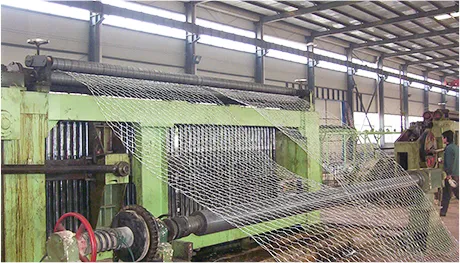-
 Phone:
Phone: -
 Email:
Email:

Effective Solutions for Rockfall Prevention Using Innovative Netting Techniques
Rockfall Netting A Crucial Solution for Landslide Prevention
Rockfalls are a significant geological hazard that can result in devastating consequences for infrastructure, ecosystems, and human lives. These natural events occur when rock fragments detach from steep slopes and tumble down, driven by gravity. The risks associated with rockfalls are particularly pronounced in mountainous regions where geological instabilities, weathering processes, and human activities can contribute to the potential for rock movement. To mitigate these risks, rockfall netting has emerged as an effective engineering solution to protect both people and property.
Understanding Rockfall Netting
Rockfall netting refers to the installation of flexible barrier systems designed to catch and contain falling rock debris. These systems generally consist of mesh made from high-strength materials, such as steel or synthetic fibers, which are anchored to the ground or to the slope to provide stability and support. Rockfall nets can vary in size, strength, and configuration, depending on the specific terrain and potential rockfall hazards.
The primary function of rockfall netting is to intercept falling rocks before they can reach vulnerable areas, such as roadways, buildings, or recreational areas. This not only reduces the immediate danger posed by falling rocks but also minimizes the need for costly and labor-intensive cleanup operations following a rockfall event.
Engineering Considerations
When designing a rockfall netting system, several engineering factors must be taken into account. First, engineers conduct a comprehensive geological assessment of the site, analyzing factors such as slope steepness, rock type, and the history of previous rockfalls. This information helps determine the appropriate type of netting and the specific configuration needed to optimize performance.
The strength and tensile properties of the netting material are critical to the system’s effectiveness. It must be able to withstand the dynamic forces exerted by falling rocks, which can vary depending on the size and speed of the debris. Additionally, the netting must be anchored securely to prevent it from being dislodged by the impact of falling rocks or by adverse weather conditions such as heavy rains or winds.
rockfall netting

Installation and Maintenance
The installation of rockfall netting typically involves a combination of specialized machinery and skilled labor. The process begins with site preparation, including clearing vegetation and any loose debris that may pose risks during installation. Following this, the netting is carefully positioned and anchored according to the engineering design specifications.
Regular maintenance and inspection are essential for ensuring the long-term effectiveness of rockfall netting systems. Over time, wear and tear from environmental factors can weaken the netting, and it may require repairs or replacement. Routine visual inspections can help identify issues before they lead to catastrophic failures, ensuring that the rockfall protection system remains reliable.
Benefits of Rockfall Netting
The implementation of rockfall netting offers numerous benefits. Primarily, it enhances safety by reducing the likelihood of rockfalls impacting human activities, thus protecting lives and property. Furthermore, by acting as a preventative measure, rockfall netting can decrease the frequency and costs associated with post-event cleanups and road closures.
In addition to its protective roles, rockfall netting can also contribute to environmental conservation efforts. By stabilizing slopes and preventing erosion, netting systems can help maintain the geological integrity of vulnerable areas, promoting healthier ecosystems.
Conclusion
In conclusion, rockfall netting serves as a critical intervention in managing the risks associated with rockfalls. By utilizing advanced engineering techniques, robust materials, and proactive maintenance strategies, rockfall netting systems can safeguard communities, infrastructure, and natural environments from the unpredictable and often destructive forces of nature. As we continue to face the challenges posed by geological hazards, investing in effective solutions like rockfall netting is more important than ever for ensuring safety and sustainability in susceptible regions.
-
Wire Mesh for Every Need: A Practical SolutionNewsJul.25,2025
-
Steel Fences: Durable, Secure, and Stylish OptionsNewsJul.25,2025
-
Roll Top Fencing: A Smart Solution for Safety and SecurityNewsJul.25,2025
-
Cattle Farm Fencing Solutions for Maximum SecurityNewsJul.25,2025
-
Affordable Iron Binding Wire SolutionsNewsJul.25,2025
-
Affordable Galvanized Wire SolutionsNewsJul.25,2025
-
Wire Hanger Recycling IdeasNewsJul.25,2025








